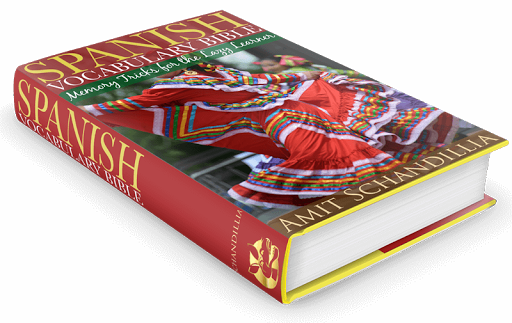No really, why Bible?
 |
| Even if you’re not religious, scriptures can be useful in language learning Photo credit: Kamilla Oliveira licensed CC BY-SA 2.0 |
The story is no different when it comes to Spanish. So how can reading a text in an archaic and outdated form of Spanish help you comprehend the Spanish you hear on the radio and read in the newspaper? A text like Bible can surprise you with its relevance. First of all, Bible like any other scripture is extremely redundant and repetitive. A lot of words are used over and over again. The setting hardly changes throughout the book and neither do most of the central characters. The consistency in theme – in this case religion – further ensures certain expressions and words are thoroughly repeated. What this means is that the likelihood of you unwittingly absorbing new words while reading the book is quite high.
Another point – a very strong one in my opinion – in favor of the Bible is its heavy use of the subjunctive. You see, religion is all about hope, wish, desire, prayers – actually a lot of the latter. And if you know anything about the subjunctive, you’d appreciate that all these keywords trigger this mood. Expressions like ojalá and espero que are scattered all over the Bible like wild oats. If you know anything about the subjunctive, you also know how difficult it appears to wrap a noob’s head around. So, what better way to internalize this pesky aspect of Spanish grammar than by reading a text saturated with it?
Although not very useful in Latin America, reading the Bible will also drill the largely archaic vosotros conjugations into you. This will come in real handy if you were to ever visit Spain because Spaniards still use vosotros as the plural second person pronoun in a familiar context. Latin Americans prefer a more formal ustedes for everyone. Also useful is the voseo featured in most Spanish versions of the Bible. Although largely seen as a restricted regionalism, the vos form is dominant in a big chunk of Latin America including countries like Colombia, Argentina, Paraguay, and a few others as far up north as Guatemala! So, it shouldn’t really hurt to have that pronoun and the corresponding verb forms down.
The right Bible to learn some Spanish
 |
| Despite being archaic, the Bible can teach some pretty relevant Spanish Photo credit: Iglesia en Valladolid licensed CC BY-SA 2.0 |
Luckily, there does exist an edition that seems to serve this very purpose. It’s called the New Life Version or the Nueva Vida Biblia Bilingüe and as the name implies, it’s bilingual. The strongest point in its favor is of course the fact that it’s bilingual so you don’t have to shuffle between two different books with two disjoint translations. The language used in it is of the elementary school level, both English as well as Spanish. This makes for a pretty easygoing experience since you don’t have to struggle too hard with the constructs.
The entire book uses less than a thousand words. What this means is that a lot of words repeat enough number of times to invariably etch hard in your memory by the time you finish reading. That’s one big advantage because at this stage, stockpiling a core vocabulary of most frequently used words in Spanish is a very big aspect of your exercise. To be more accurate, there’s like 800-900 words which is pretty close to 1,000 – the number of words that comprise over 75% of all native Spanish communications. That you’ll get to learn those words in context is a bonus point.
This version is far from perfect and only includes the New Testament. But your focus is language learning more than religious accuracy, isn’t it? There are also some anomalies in translation but they aren’t big enough to render the exercise ineffective. In fact, some translations are deliberately inaccurate to make the text more readable and relevant. For example, instead of saying saved, it says saved from the punishment of sin. This is to ensure the context is crystal clear to the reader.
Furthermore, most words are used with a single meaning throughout the book. This is another deliberate measure to eliminate any confusion. For example, a sentence like Paul stood before the court could be misunderstood as Paul standing up “after” the court does (which makes absolutely zero sense); hence, to avoid any potential confusion, it says Paul stood up in front of the court. How’s that for clarity?
In a nutshell, reading Bible and memorizing the verses doesn’t have to be for religious reasons. You can use the book for purely language learning purposes and still maintain your integrity as an atheist (or a Hindu, a Jew, a Muslim, etc.). It’s not bigotry. It’s simply employing every resource possible into learning a language regardless of your religious preferences, as simple as that.



.png)